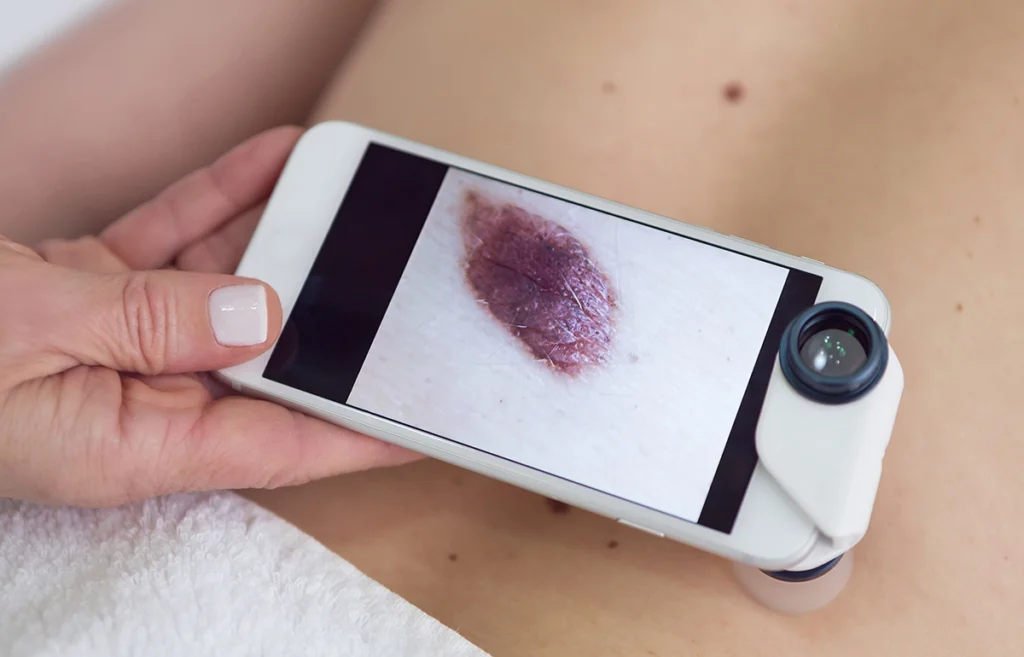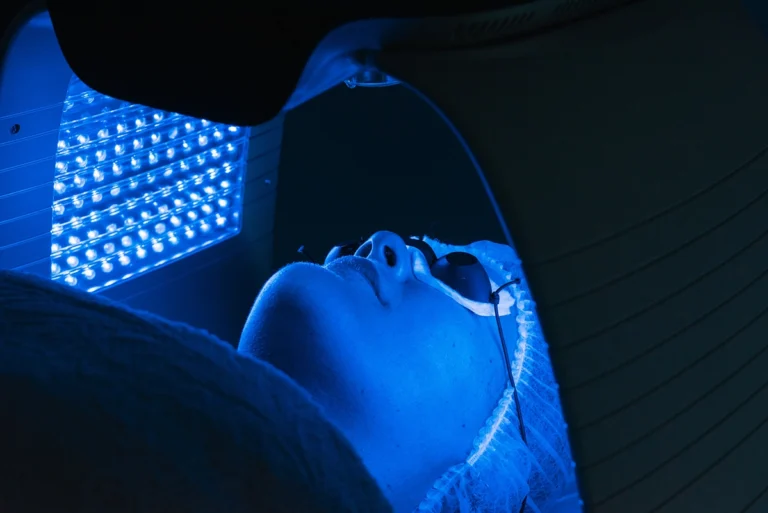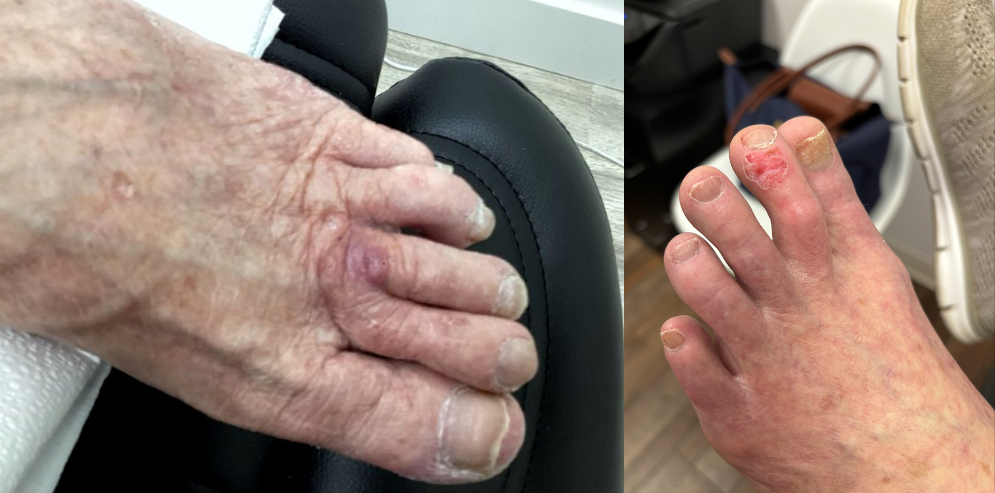When people think of skin cancer, they often picture a suspicious mole. It’s true that melanoma, the deadliest form of skin cancer, can begin as a mole—or develop from an existing one. But the reality is that most skin cancers do not start as moles at all.

The majority of cases are basal cell skin cancer and squamous cell skin cancer, which typically appear as new growths, scaly patches, or sores that don’t heal. These nonmelanoma skin cancers look very different from moles and are just as important to detect early.
This article clears up the confusion, explains the difference between moles and skin cancer, and highlights the importance of checking all skin changes—not just moles.
Does Skin Cancer Always Start as a Mole?
No. While melanoma can begin as a mole, basal cell skin cancer and squamous cell skin cancer almost never do.
- Melanoma: Can develop from a normal mole, or appear suddenly on otherwise clear skin.
- Basal cell skin cancer: Usually appears as a shiny bump, pink patch, or sore that won’t heal.
- Squamous cell skin cancer: Often looks like a rough, scaly patch, wart-like growth, or sore.
So while moles matter in melanoma detection, focusing only on them risks missing other types of skin cancer.
Can a Mole Turn Into Skin Cancer?
Yes, but this mainly applies to melanoma.
Warning signs to watch for include the ABCDE rule:
- A – Asymmetry: One half looks different from the other.
- B – Border: Edges are irregular or jagged.
- C – Color: Multiple shades of brown, black, or red.
- D – Diameter: Larger than a pencil eraser.
- E – Evolving: Any change in size, shape, or color.
If you notice these changes in a mole, it’s important to get it checked right away.
Skin Cancer vs Mole: Key Differences
Here’s a simple comparison to help distinguish between a normal mole and skin cancer:
| Feature | Mole | Skin Cancer (Basal Cell/Squamous Cell/Melanoma) |
| Color | Usually uniform brown or black | Can be pink, red, white, brown, black, or multicolored |
| Shape | Round, even borders | Irregular, jagged, or uneven edges |
| Size | Usually small and stable | May grow larger over time |
| Texture | Smooth, flat, or slightly raised | Scaly, crusted, ulcerated, or shiny |
| Change | Stays the same for years | Changes in appearance, bleeds, or doesn’t heal |
Why Most Skin Cancers Don’t Involve Moles
- Basal cell skin cancer begins in the basal cells of the skin, not from pigmented moles.
- Squamous cell skin cancer develops in the squamous cells on the surface of the skin.
- Both are linked primarily to UV damage and cumulative sun exposure, not to mole growth.
This is why any skin change—not just changes in moles—should be checked by a dermatologist.
Prevention Tip: Check All Skin Changes, Not Just Moles
To protect yourself:
- Perform regular self-exams and look at your entire body, not just moles.
- Look for new growths, sores, or scaly patches.
- Protect your skin with sunscreen and clothing.
- Schedule routine dermatology checkups, especially if you’ve had a history of skin cancer.
Treatment Options for Skin Cancer
If skin cancer is found, treatment depends on the type and stage. Common options include:
- Mohs surgery: Effective for high-risk or recurring cases.
- Radiation therapy (for skin cancer): standard radiation treatments sometimes use higher-energy beams that penetrate deeper into tissue. These are often used when surgery is not preferred, but they may affect nearby healthy tissue more and come with more side effects.
- IGSRT (Image-Guided Superficial Radiotherapy): A gentle, non-surgical treatment that uses low-dose, skin-level radiation precisely targeted with ultrasound imaging. Because it only reaches the surface of the skin, it minimizes effects on healthy tissue while maintaining a 99%+ cure rate for nonmelanoma skin cancers.
For many patients, GentleCure’s IGSRT offers a safe, effective, surgery-free way to treat nonmelanoma skin cancers without surgical scarring or downtime.
FAQ
No. Only melanoma is strongly linked to moles; most skin cancers do not.
Yes, some melanomas start in moles, especially if they change in size, shape, or color.
Look for irregular borders, changing colors, and sores that don’t heal.
Basal cell skin cancer often looks like a shiny bump or pink patch, not a pigmented mole.
Yes. GentleCure’s IGSRT is a non-invasive treatment that can effectively treat basal cell and squamous cell skin cancers without cutting the skin.
Conclusion
So, does skin cancer always start as a mole? The answer is no. While melanoma can begin in moles, most skin cancers start as new spots, sores, or patches that look nothing like a mole.
The important takeaway: don’t just check your moles—check all skin changes. And if you are diagnosed with skin cancer, know that surgery-free options like IGSRT provide gentle, effective treatment without scarring or downtime. GentleCure helps educate patients about these advanced, surgery-free treatments so they can make informed choices about their care.








